|
LEAF-MINING SAWFLIES |
||
|
In Europe, leaf miners occur in three different tenthredinid sawfly groups: in the nematine tribe Pseudodineurini, in the tribe Heterarthrini in the subfamily Heterarthrinae, and in the enigmatic tribe Fenusini. The last two groups were previously treated as two different tribes of the subfamily Heterarthrinae, but recent molecular phylogenetic analyses have strengthened old suspicions that heterarthrines and fenusines are in fact distantly related and have derived the leaf-mining habit independently. European species in the Pseudodineurini occur on Ranunculaceae species, but the host plants of Fenusini and Heterarthrini are more diverse. Most of the species occur on deciduous trees, and many tree species are attacked by both fenusine and heterarthrine miners. Co-occurring species can usually be identified on the basis of the location and shape of the mines, and there are also diagnostic differences in the larval colour patterns. Many lepidopteran and coleopteran leaf miners also occur on the same tree species, but their larvae are luckily rather different. Some common leaf-mining sawflies are shown below, additional pictures and information on all kinds of leaf miners can be found at www.leafmines.co.uk, www.bladmineerders.nl, and www.forestpests.org/leafminers. |
||
|
Nematinae: Pseudodineurini |
||
|
Pseudodineura mentiens on Hepatica nobilis All Pseudodineura species occur on plants in the Ranunculaceae, but each miner is usually specialized on utilizing only one host species. This P. mentiens larva was found by Heikki Roininen in southern Finland.
|
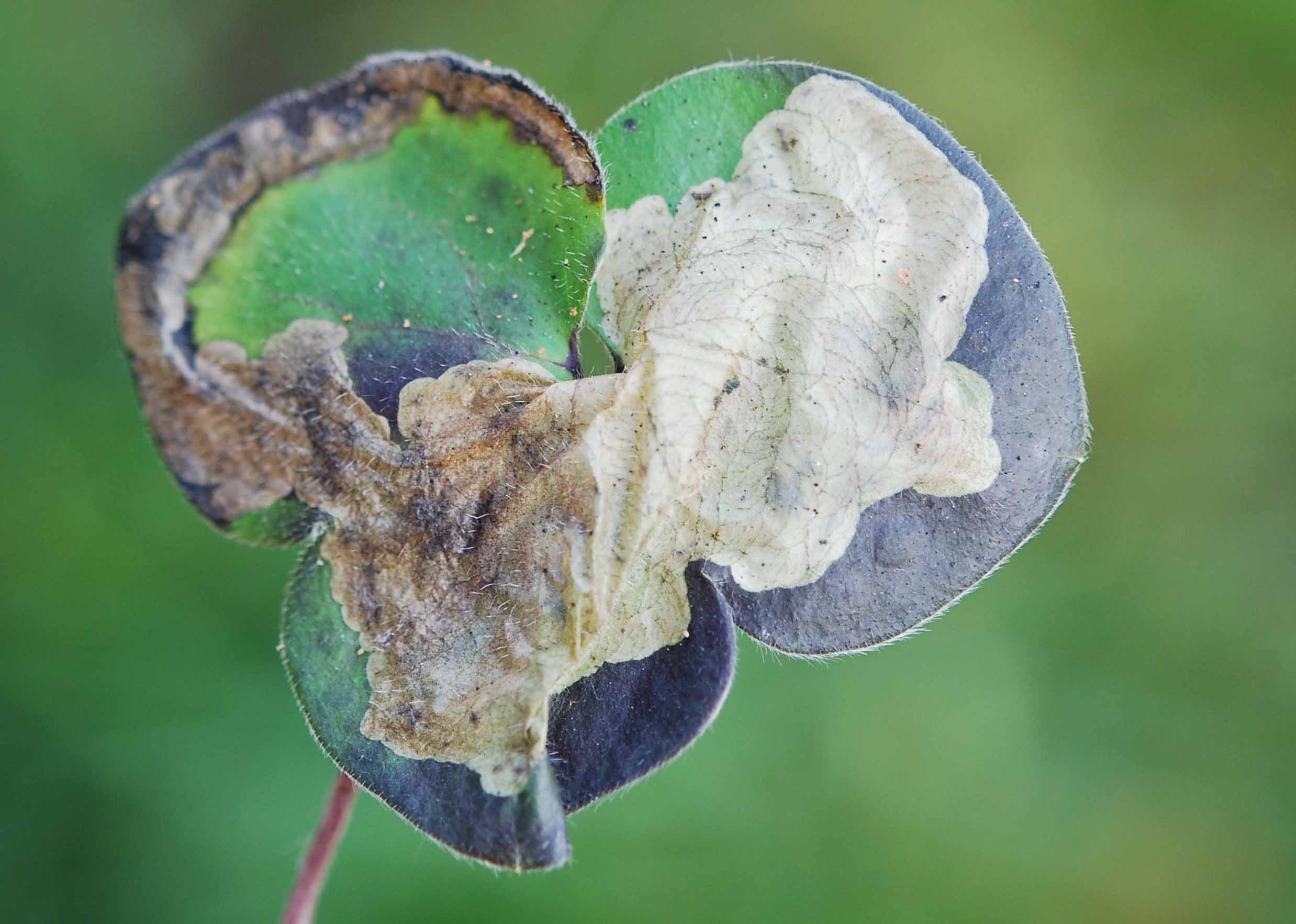 |
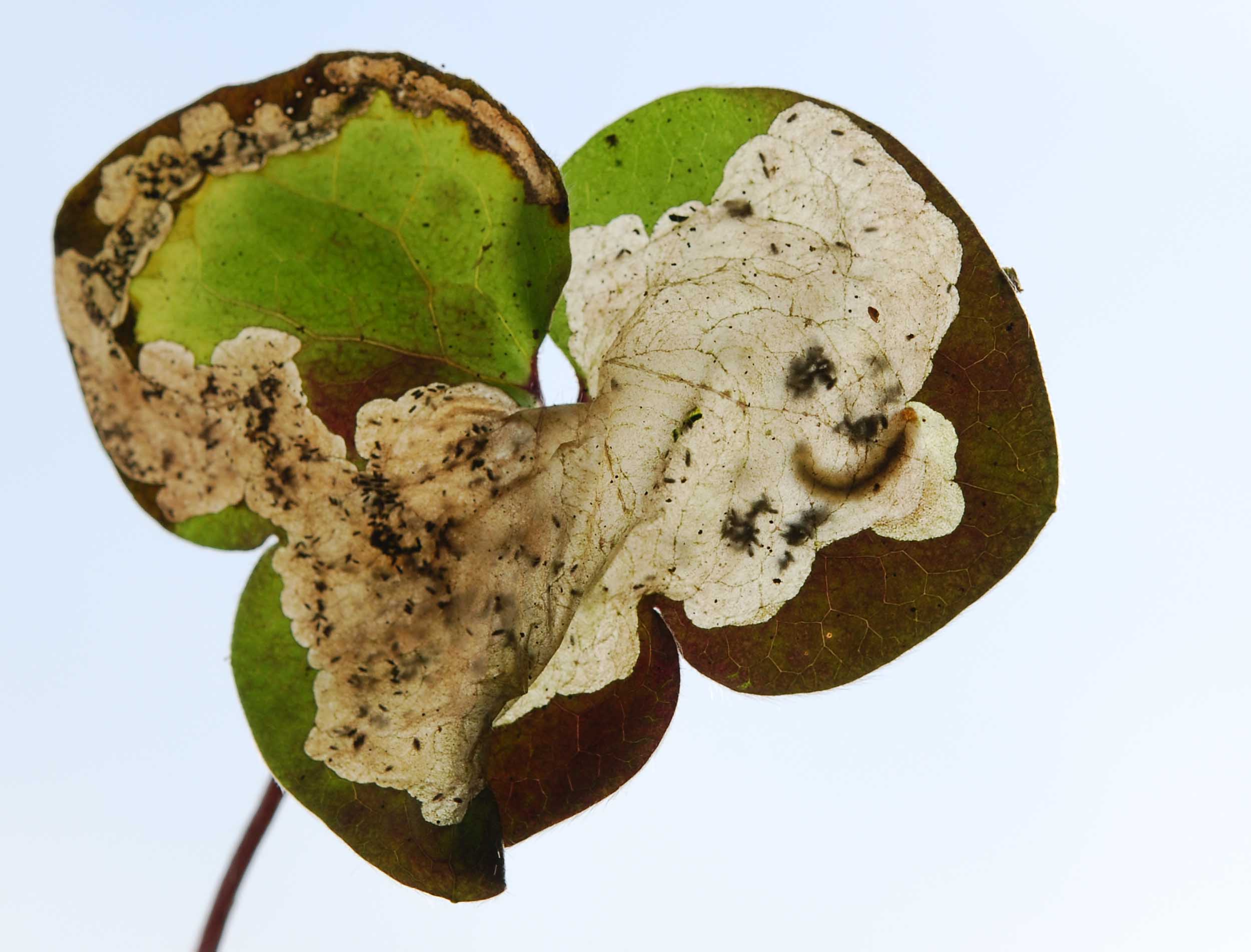 |
|
Pseudodineura enslini on Trollius altissimus This larva was photographed in Slovakia, in Finland the species occurs on Trollius europaeus. |
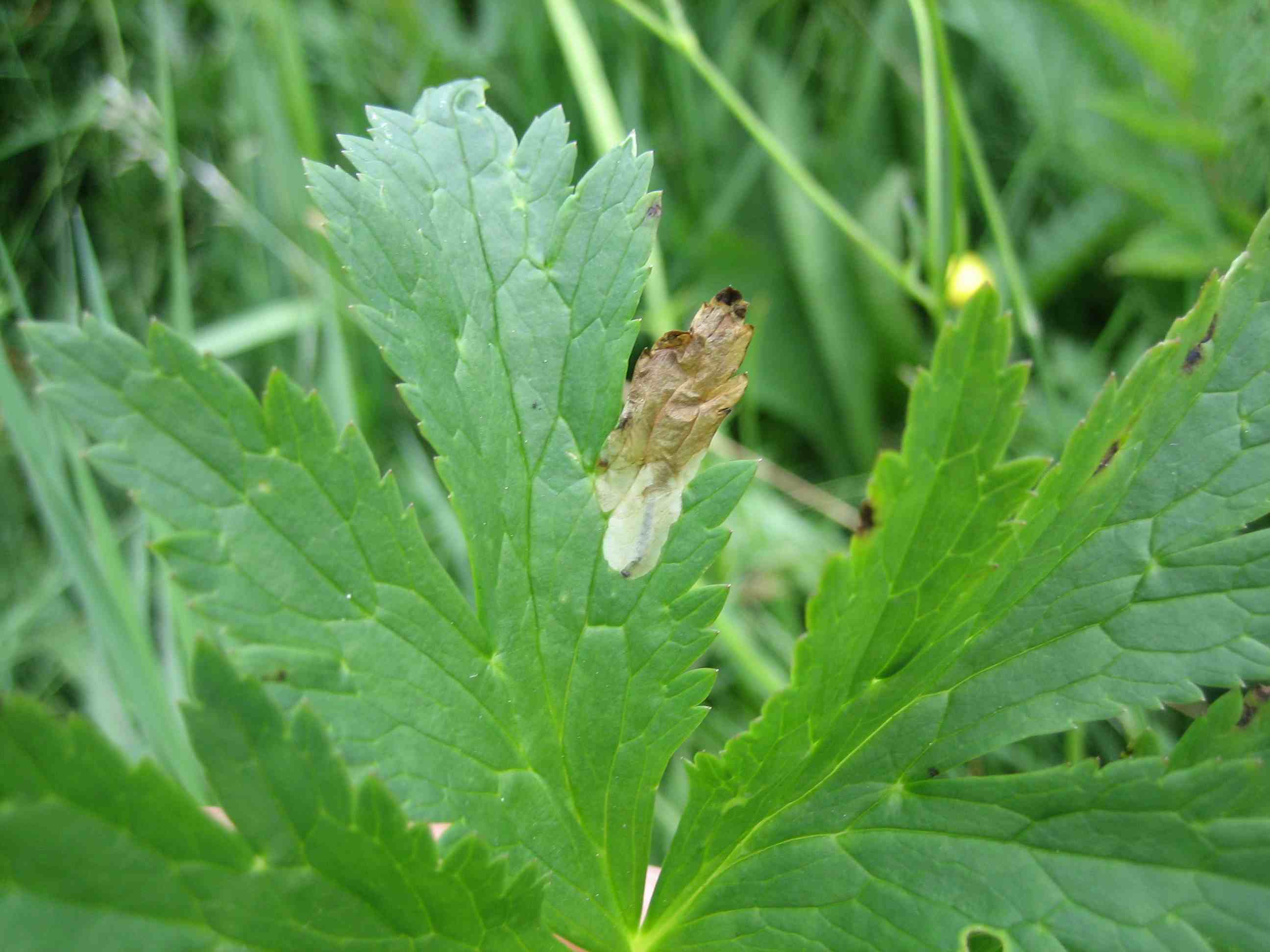 |
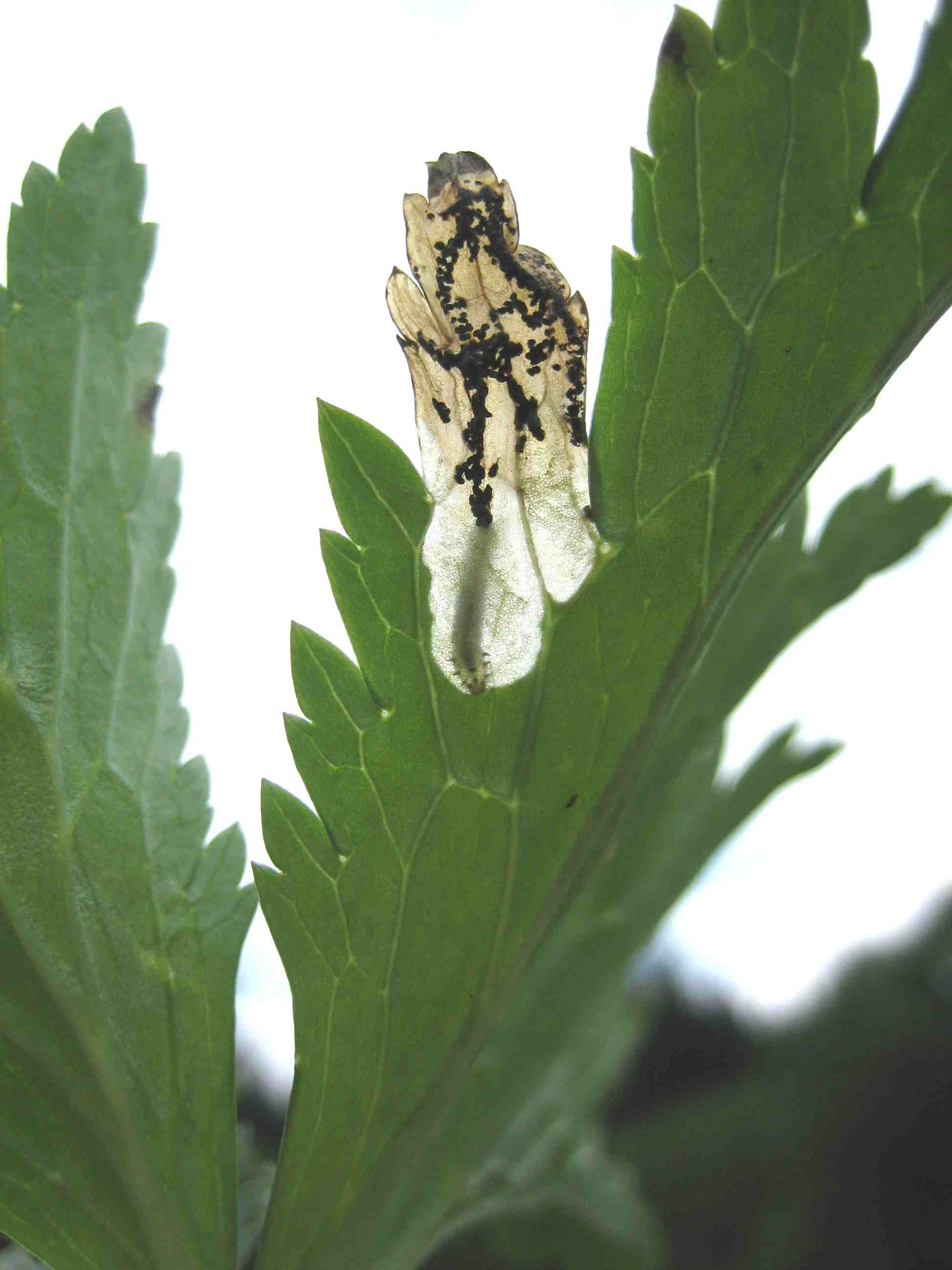 |
|
Blennocampinae(?): Fenusini |
||
|
Fenusa dohrnii on Alnus incana Mines tend to be confined to regions between larger veins (compare to Heterarthrus vagans below). |
|
|
|
Fenusa pumila on Betula pubescens Mines start near the center of the leaf and are initially confined to regions between larger veins. The larva has black spots (compare to Profenusa thomsoni below). Mines get larger towards the autumn.
|
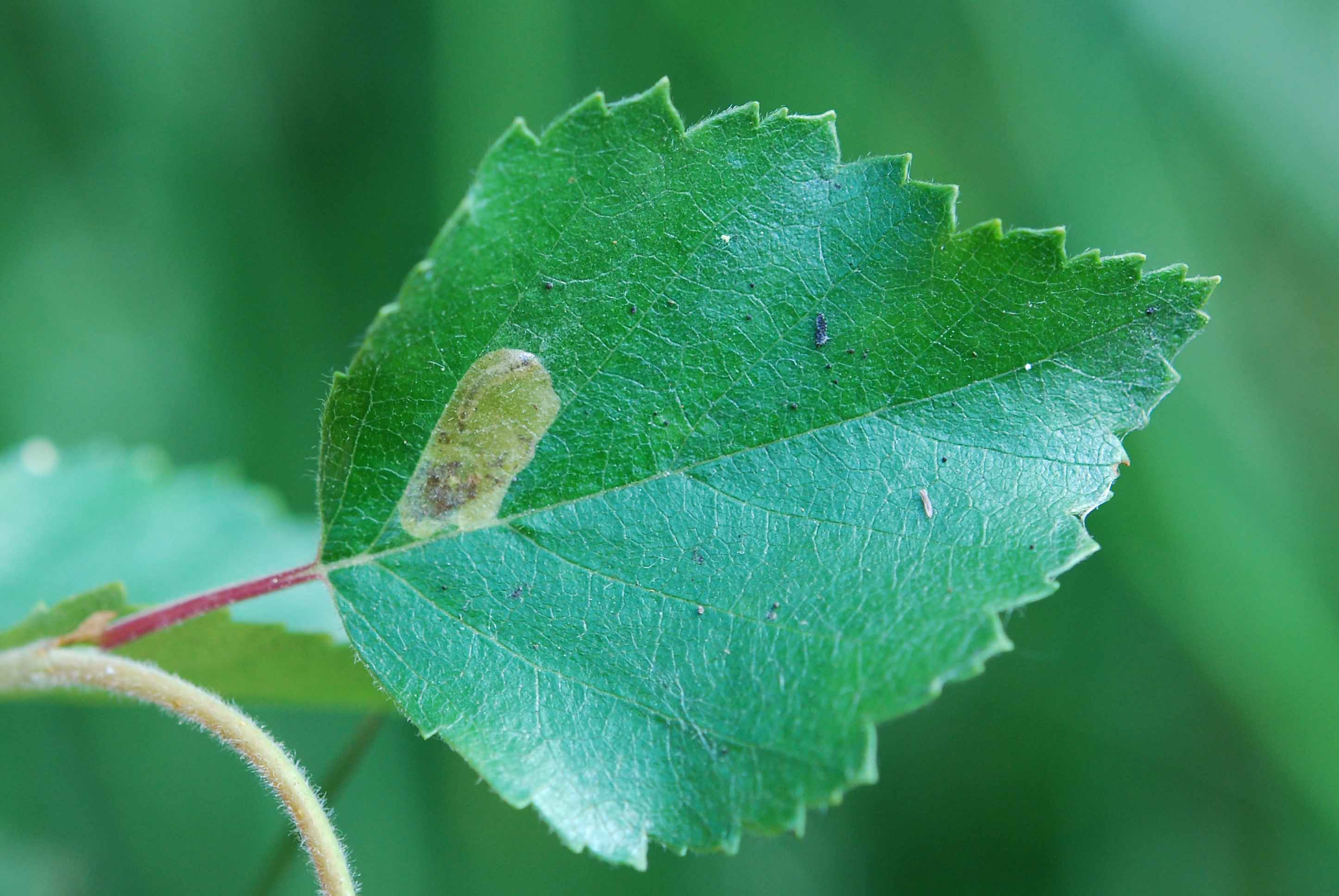 |
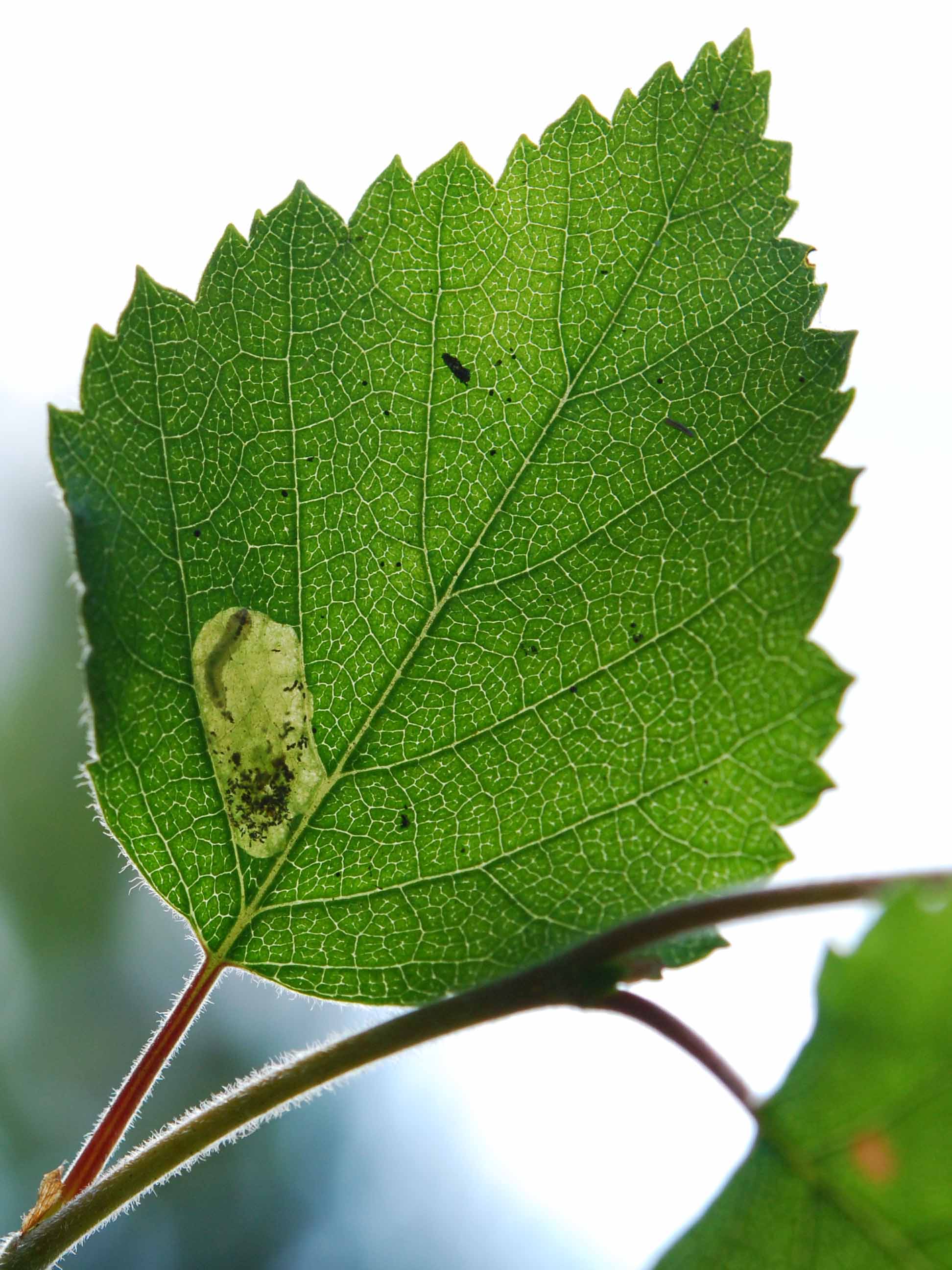 |
|
Fenusella septentrionalis on Salix lapponum Mine on the side of the leaf (compare to Heterarthrus microcephalus below). This species has traditionally been called F. wuestneii, but according a new study by A. D. Liston, F. wuestneii is a related but separate Central European species on Salix viminalis. |
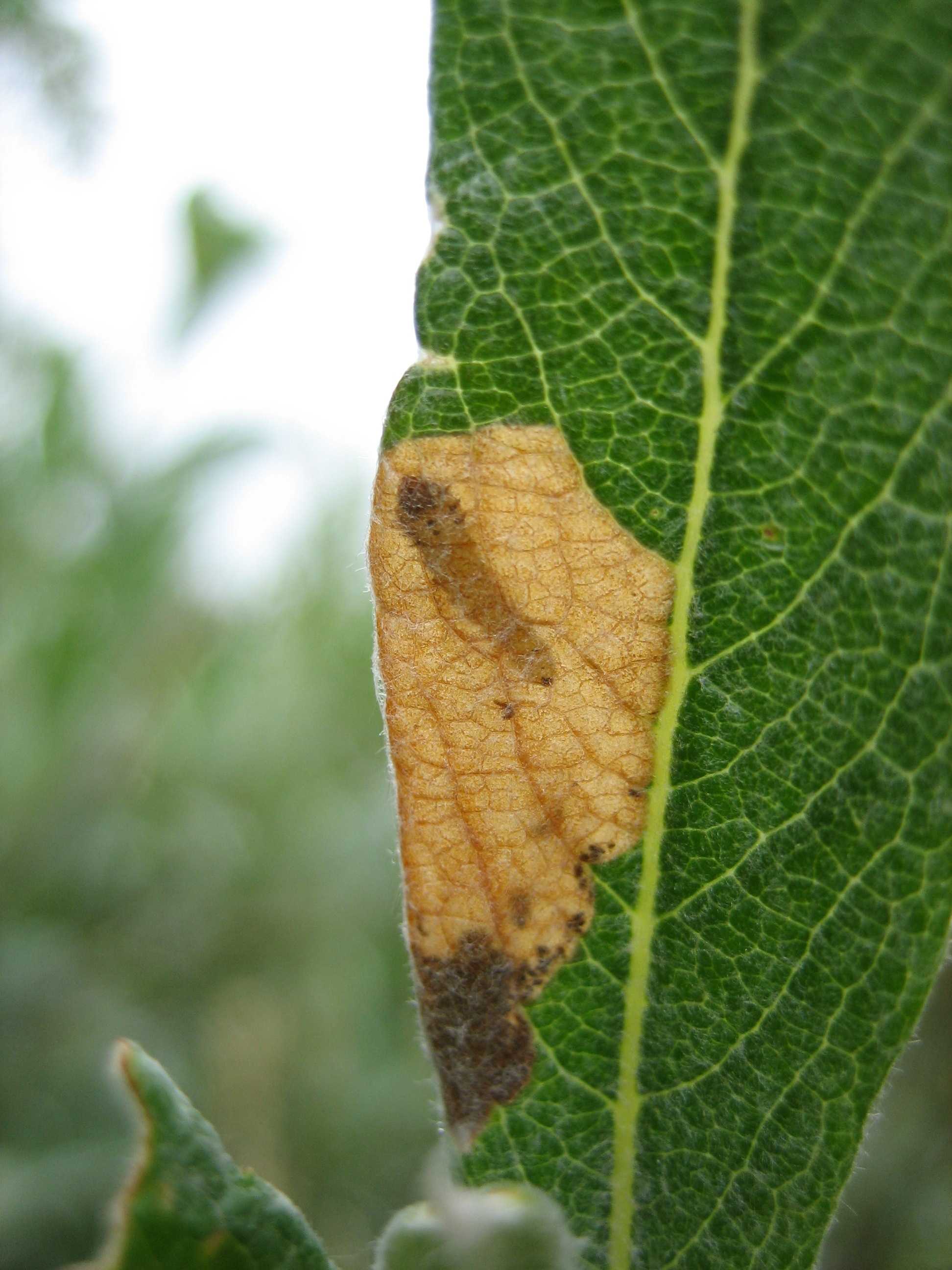 |
|
|
Fenusella nana on Betula pubescens Oviposition site on edge of leaf. Note triangular patch of frass remaining at the location from which the larva started feeding. |
|
|
|
Scolioneura betuleti on Betula pubescens (left) and Betula pendula (right) Scolioneura betuleti oviposits on leaf edges, but the blotch mines later encompass a large portion of the birch leaves. The frass does not form a triangular patch near the leaf edge as in Fenusella nana mines (above). Mines and larvae of S. betuleti can be found commonly in late summer and autumn.
|
 |
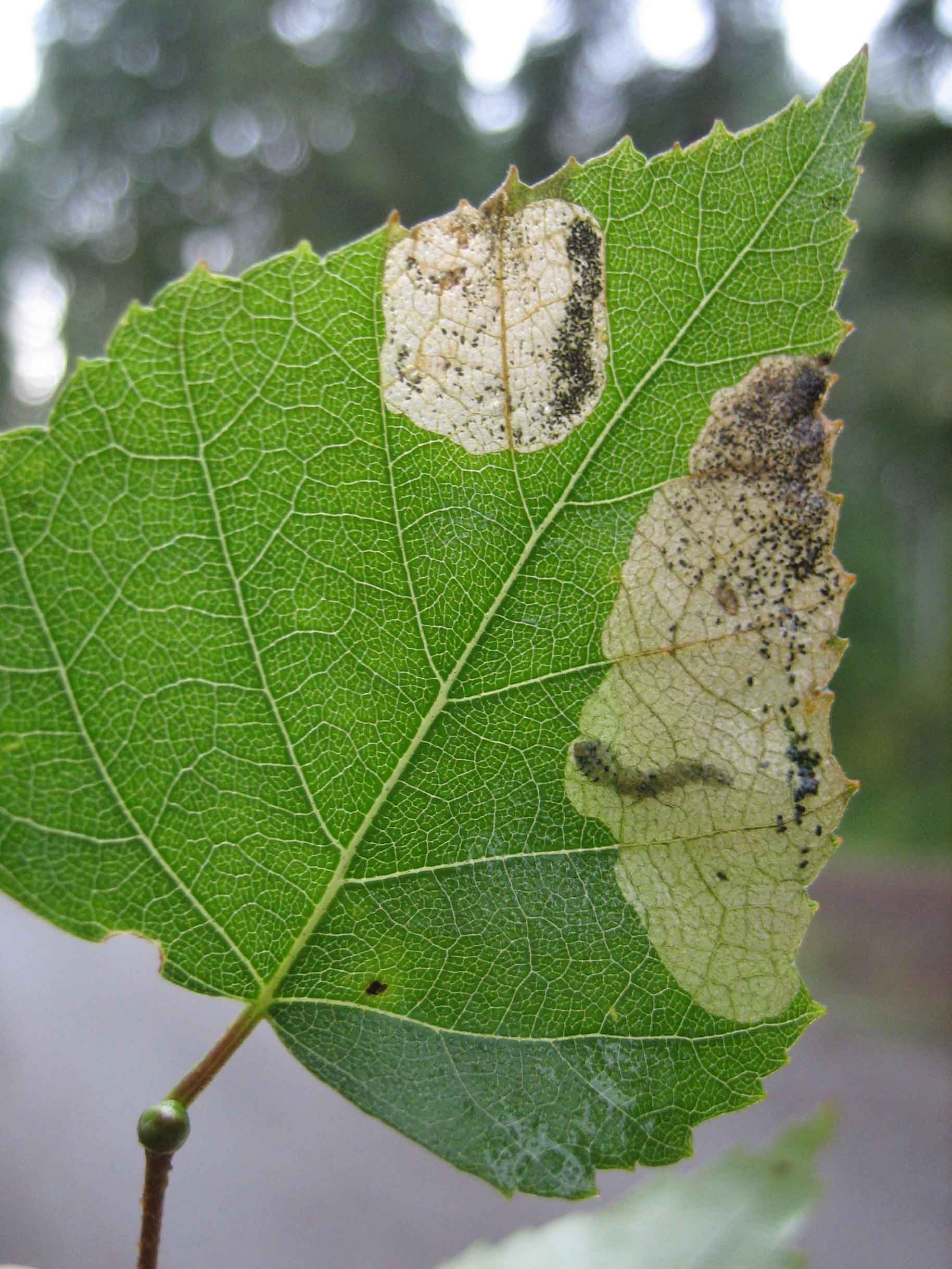 |
|
Scolioneura betuleti on Betula pubescens ssp. czerepanovii Scolioneura betuleti also occurs on mountain birch in Lapland.
|
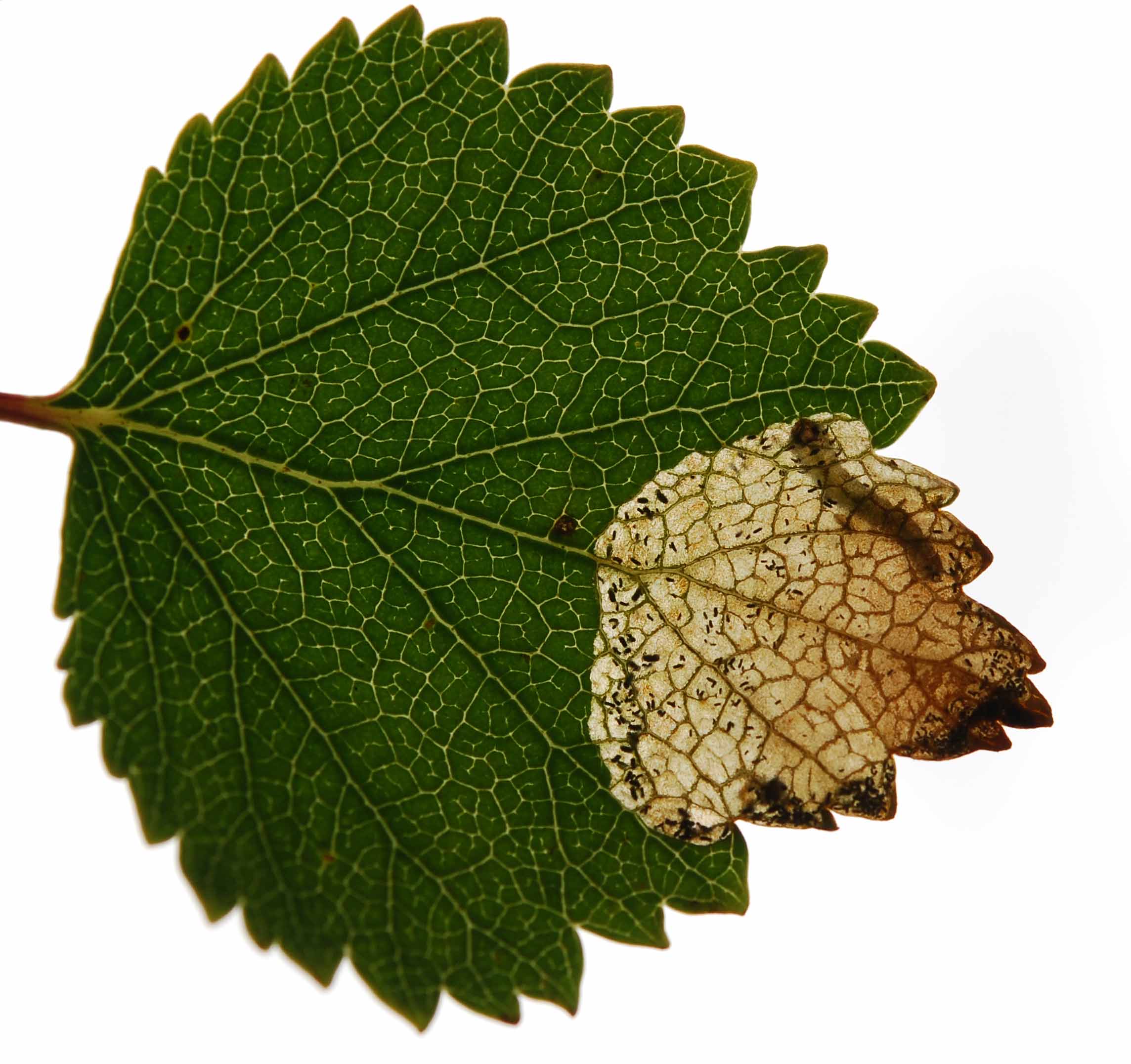 |
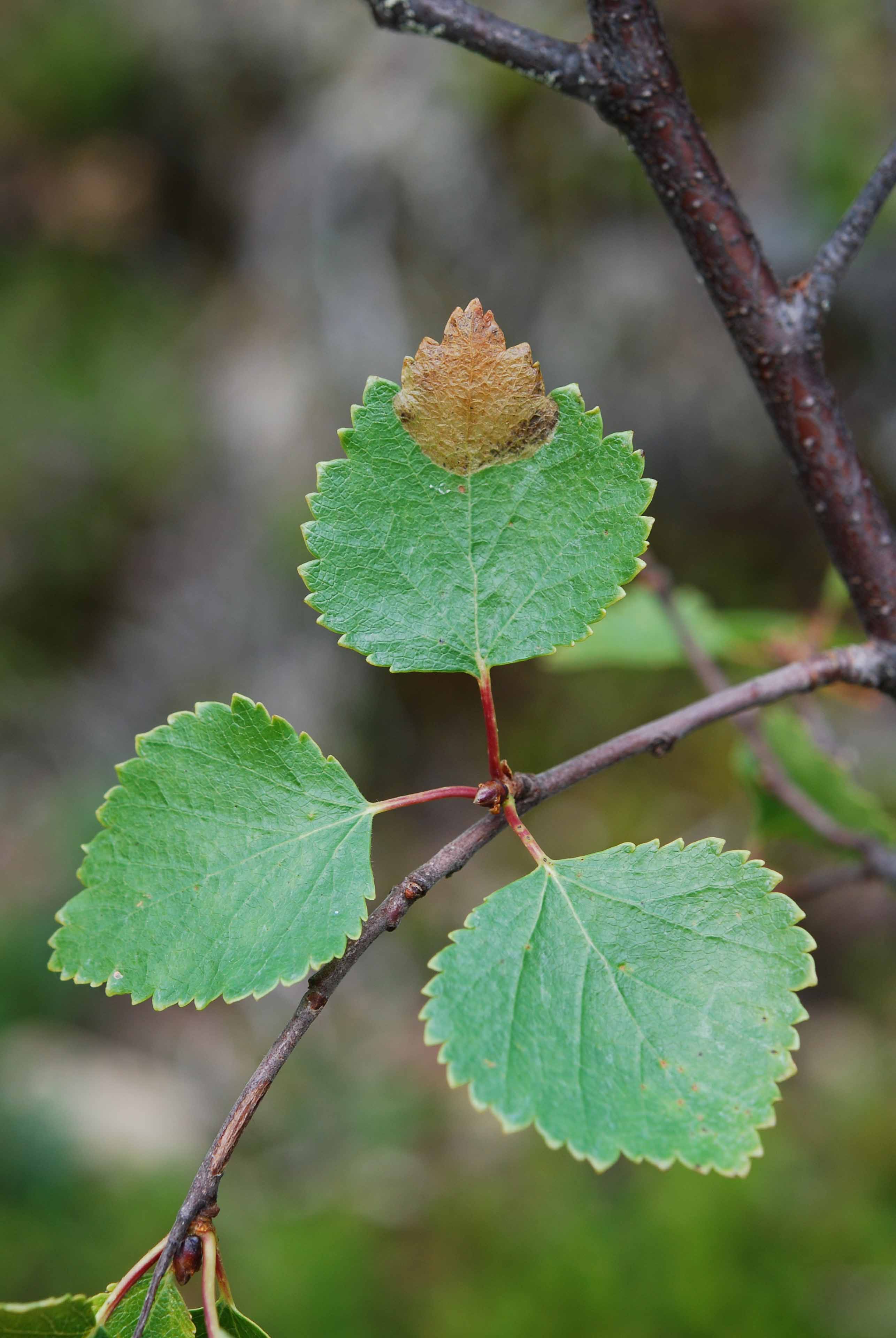 |
|
Left: Profenusa thomsoni on Betula pubescens Oviposition site and mine close to midrib (compare to Fenusa pumila and Fenusella nana above).
Right: Profenusa pygmaea on Quercus robur Oviposition site near leaf edge. The larva in this mine had been killed by an unknown parasitoid, hence the dark colour. |
|
|
|
Metallus albipes on Rubus idaeus Metallus albipes oviposits close to the midrib or larger veins of Rubus idaeus leaves. The mine starts off as a narrow tunnel but then widens to a large blotch mine.
|
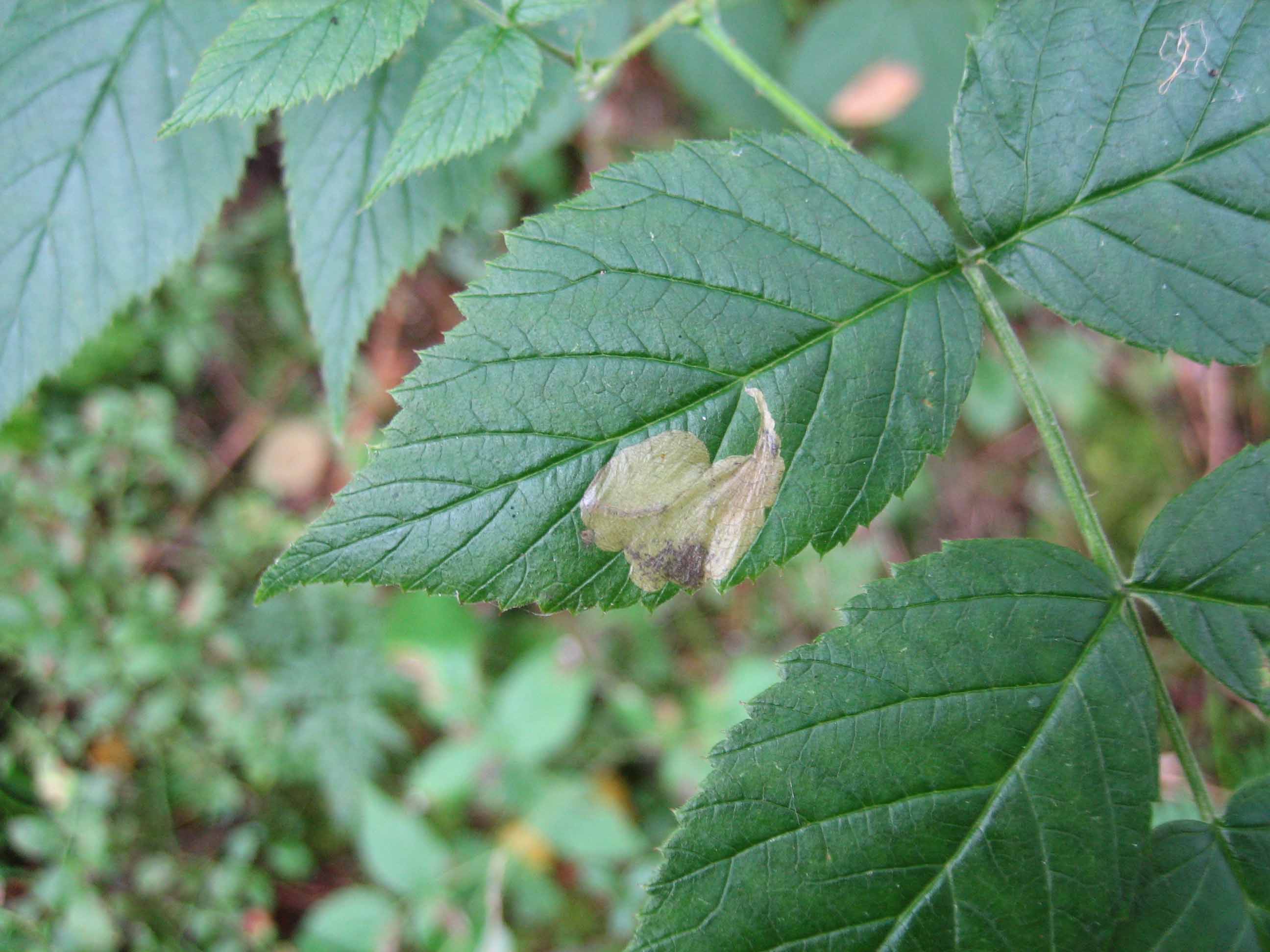 |
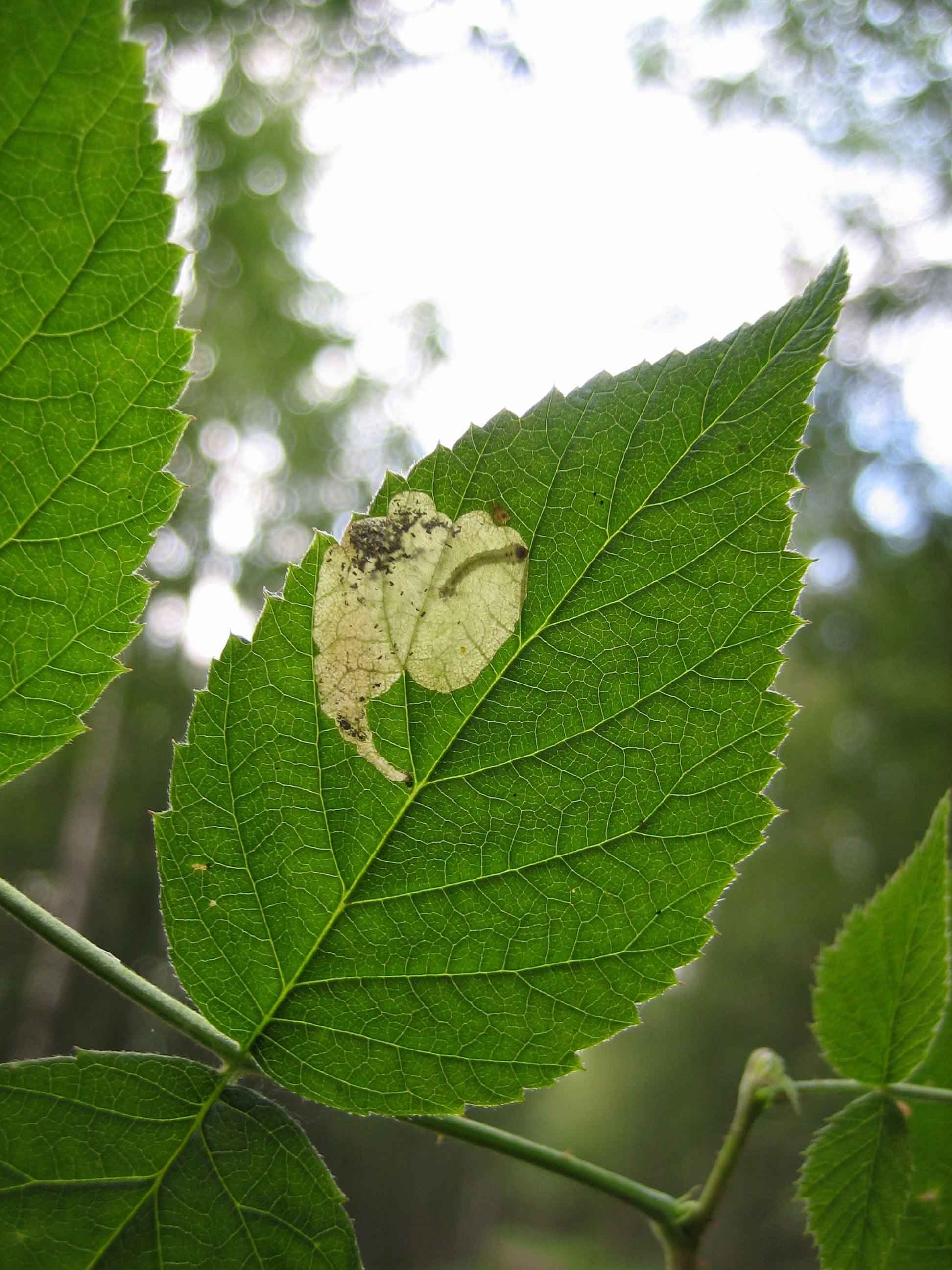 |
|
Heterarthrinae: Heterarthrini |
||
|
Heterarthrus microcephalus on Salix phylicifolia Oviposition site and mine close to the tip of the leaf, and the larva removes frass from the mine (compare to Fenusella septentrionalis above). |
|
|
|
Heterarthrus microcephalus on Salix pentandra H. microcephalus is a common species which occurs on many different willow species. |
|
|
|
Heterarthrus ochropoda on Populus tremula Large reddish brown mine, larva removes frass from mine. |
|
|
|
Heterarthrus vagans on Alnus incana Large blotch mines, larvae expel frass from mines (compare to Fenusa dohrnii above). |
|
|